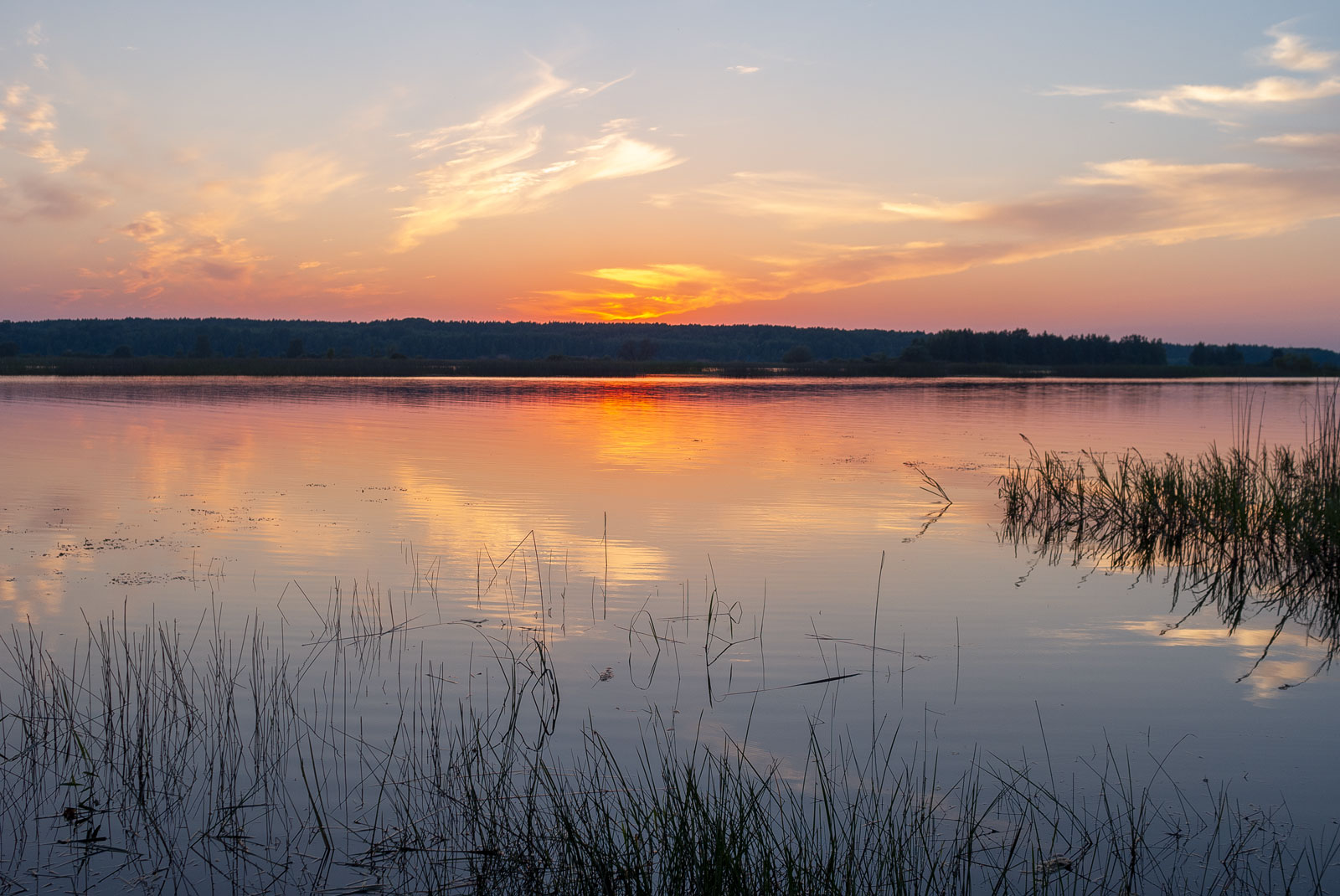Rybinsk
Rybinsk is a very charming city in the Yaroslavl region. One of its main landmarks is the fire tower built in 1912.
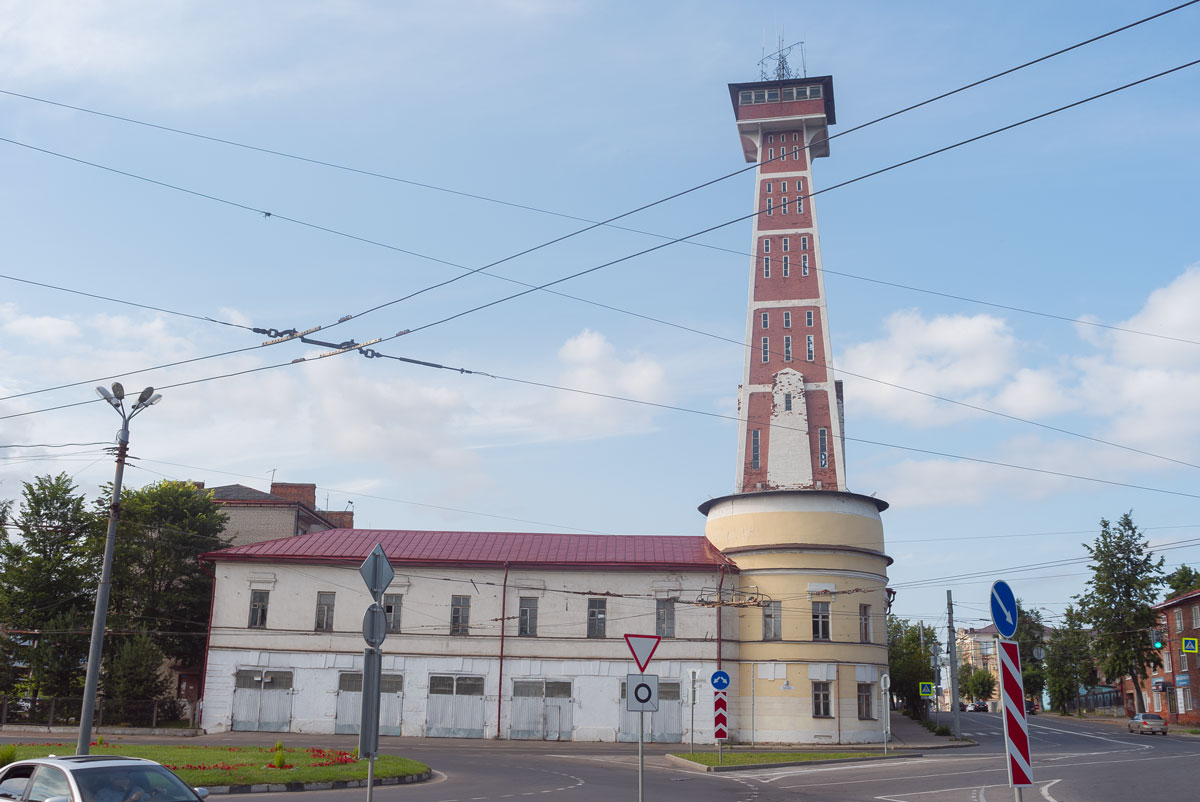
The tower was built in the neoclassical style. For some reason, all the towers to the north of Moscow were built in this style. In the south, the towers are completely different.
The tower is still in use today, with a fire department and Ministry of Emergency Situations department located there.
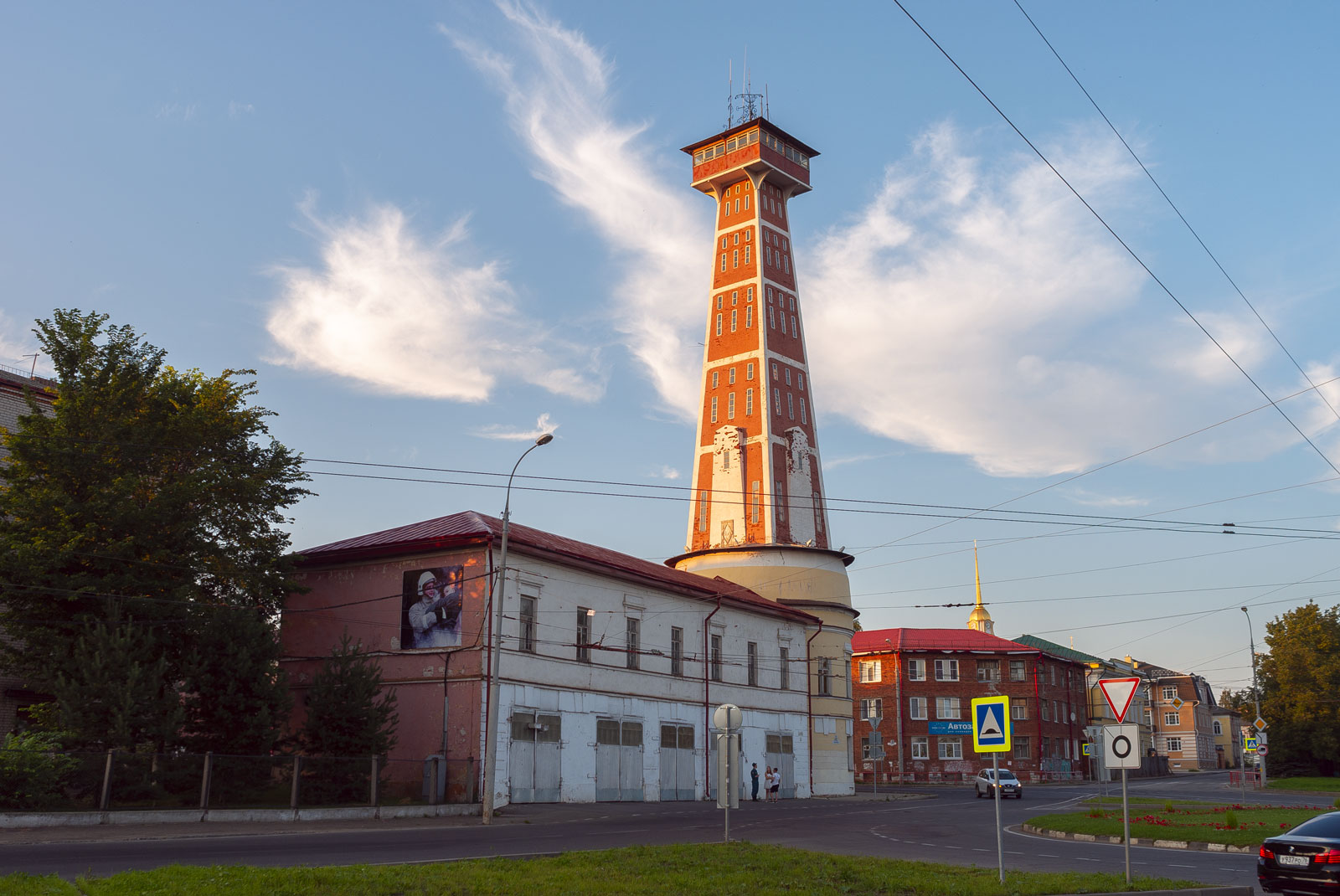
There are many old red brick buildings in Rybinsk. Most of them are abandoned and falling apart, but there is hope that they will be restored.
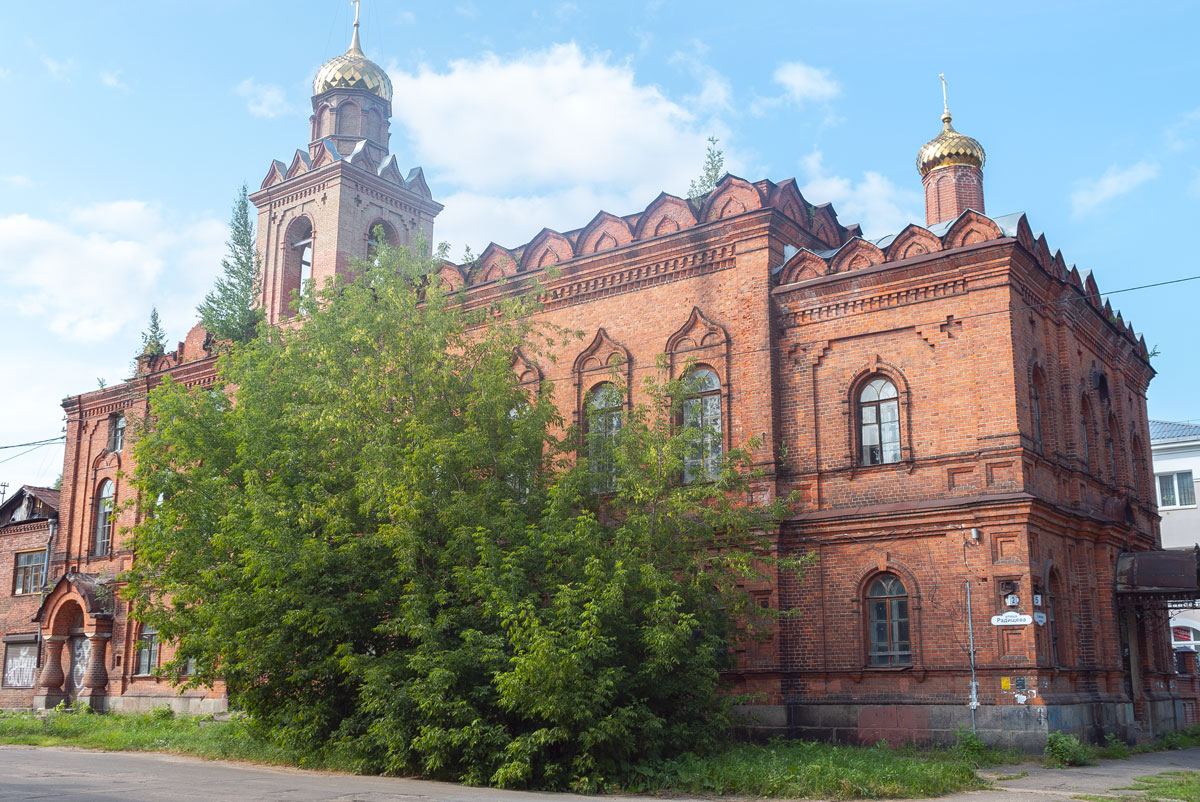
The most fabulous house in the pseudo-Russian style with a touch of eclecticism is the “Mauritanian Castle” or “Myrkin’s House”. The actual owner, Myrkin, built the house, but the architect of this beauty is unknown.
The house was built in 1880. Before the revolution, it housed the State Bank of the Russian Empire. During the Soviet era, the building served as a courthouse, prosecutor’s office, and a lot of useless bureaus. Until the 1960s, the house was heated by stoves that even worked in the summer because of the thick walls, which kept the rooms cold all year round.
Therefore, in the 1980s, one service after another began to move out of the house, and the building gradually fell into disrepair up to the present day. Currently, the condition of the house is catastrophic.
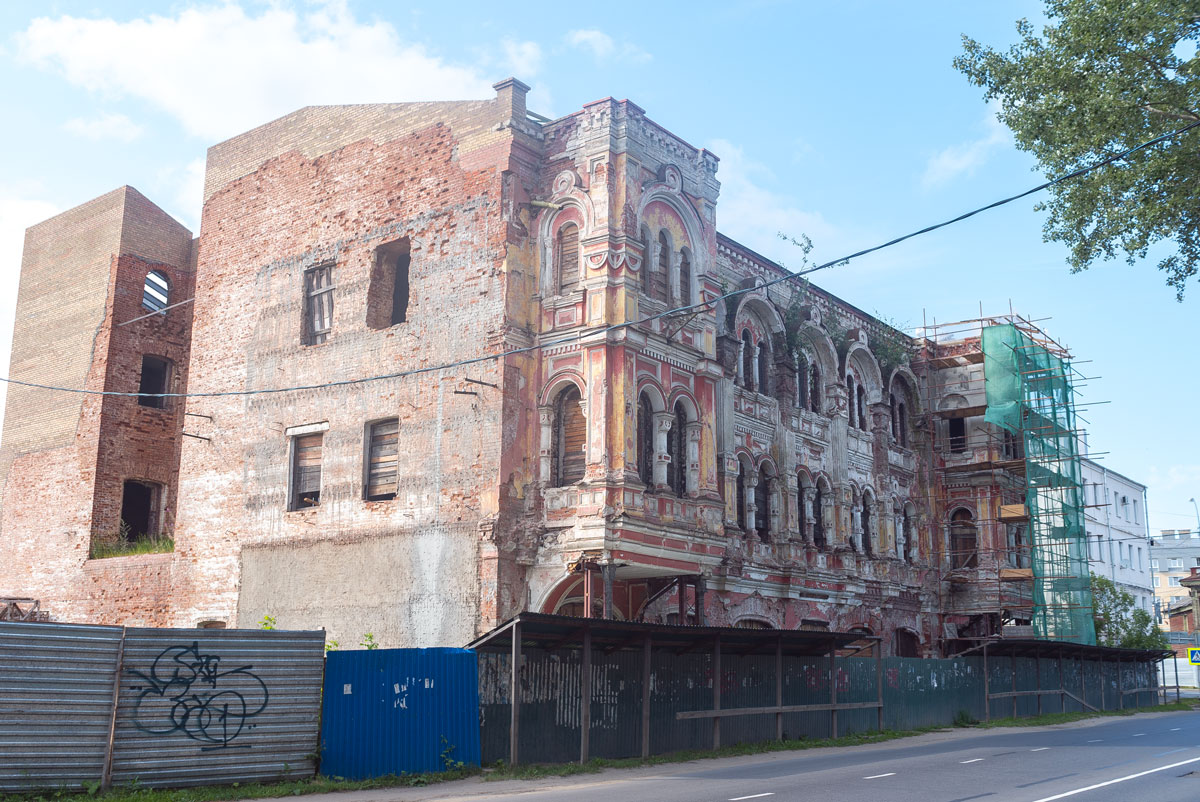
Fortunately, the authorities of Rybinsk began the reconstruction of the house in 2019. Let’s see what comes out of it.
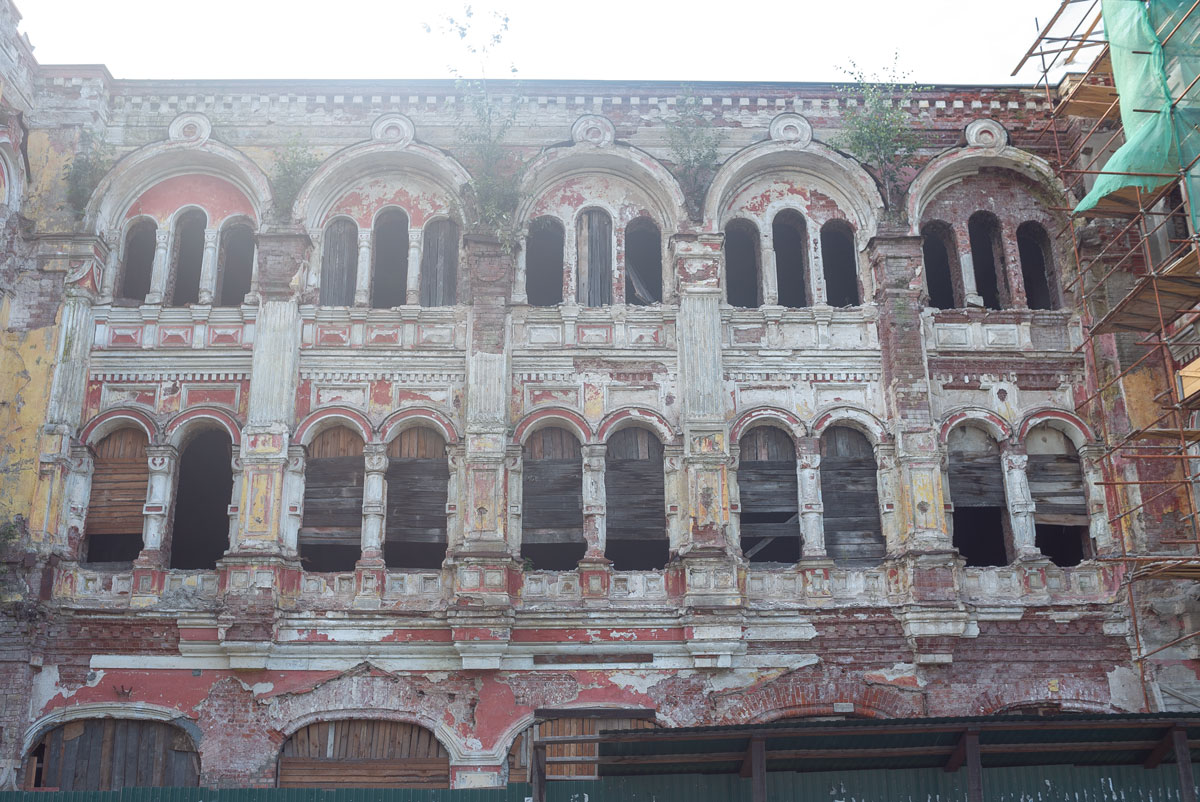
The building of the Rybinsk Stock Exchange has been much better preserved. Before the revolution, there was some capitalism in Russia, so stock exchanges operated in the country. The Rybinsk Stock Exchange was the third largest after Moscow and St. Petersburg.
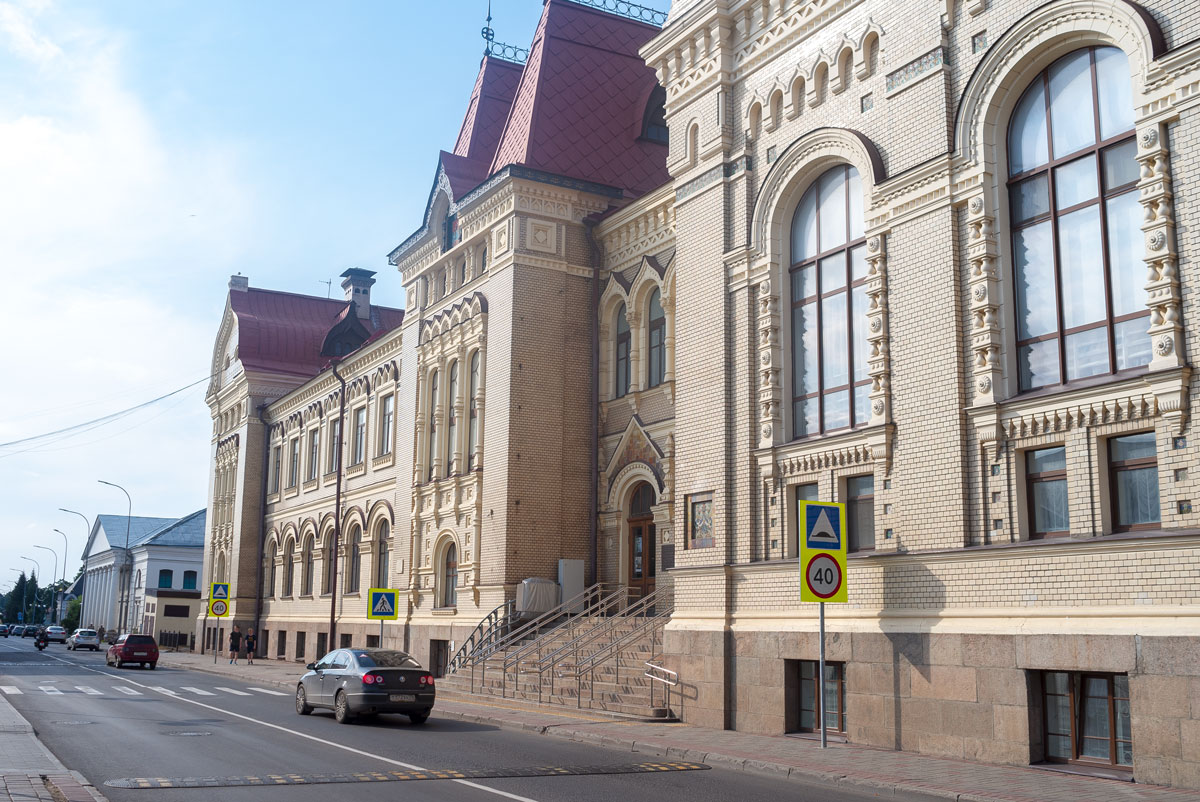
The Rybinsk Stock Exchange mainly traded in flour and grain, not fish as one might think. It was simply a transshipment point since the Volga River flows right behind the exchange.
The first version of the Stock Exchange was opened in 1811 in a building of classical style.
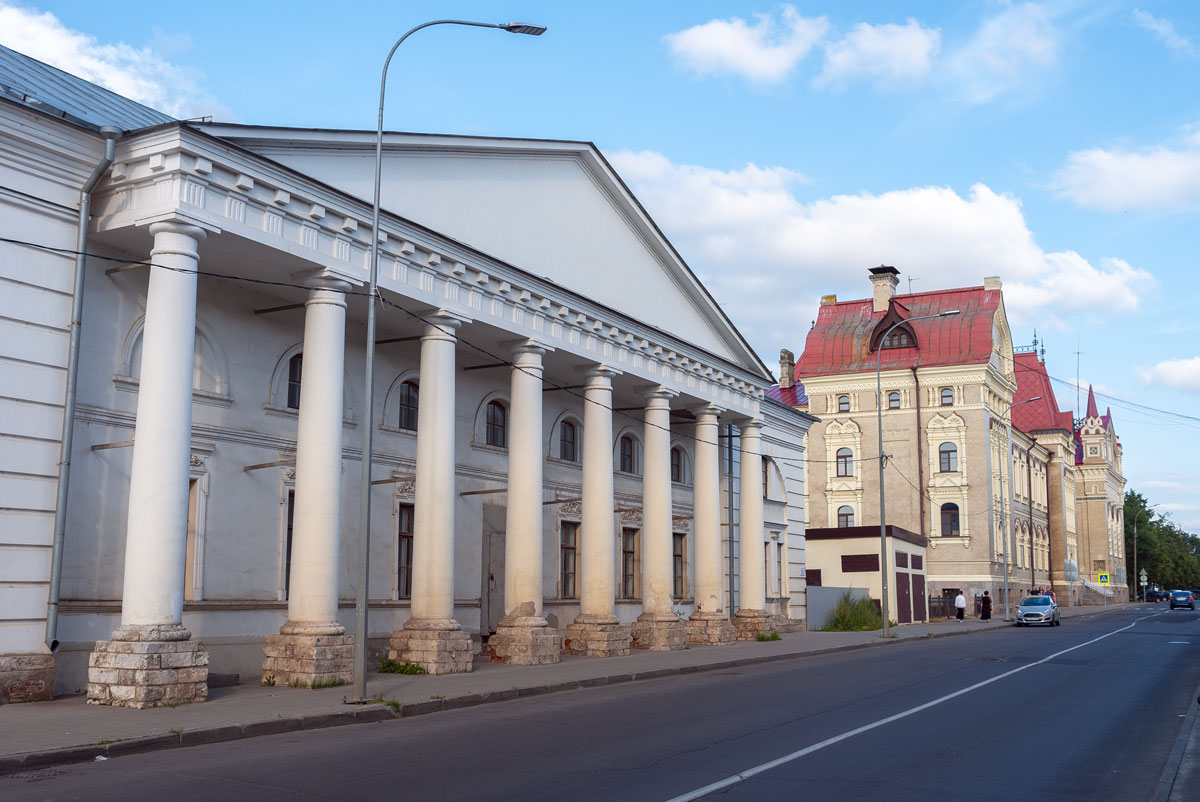
Then in 1912, a new building for the Stock Exchange was built nearby in the neo-Russian style.
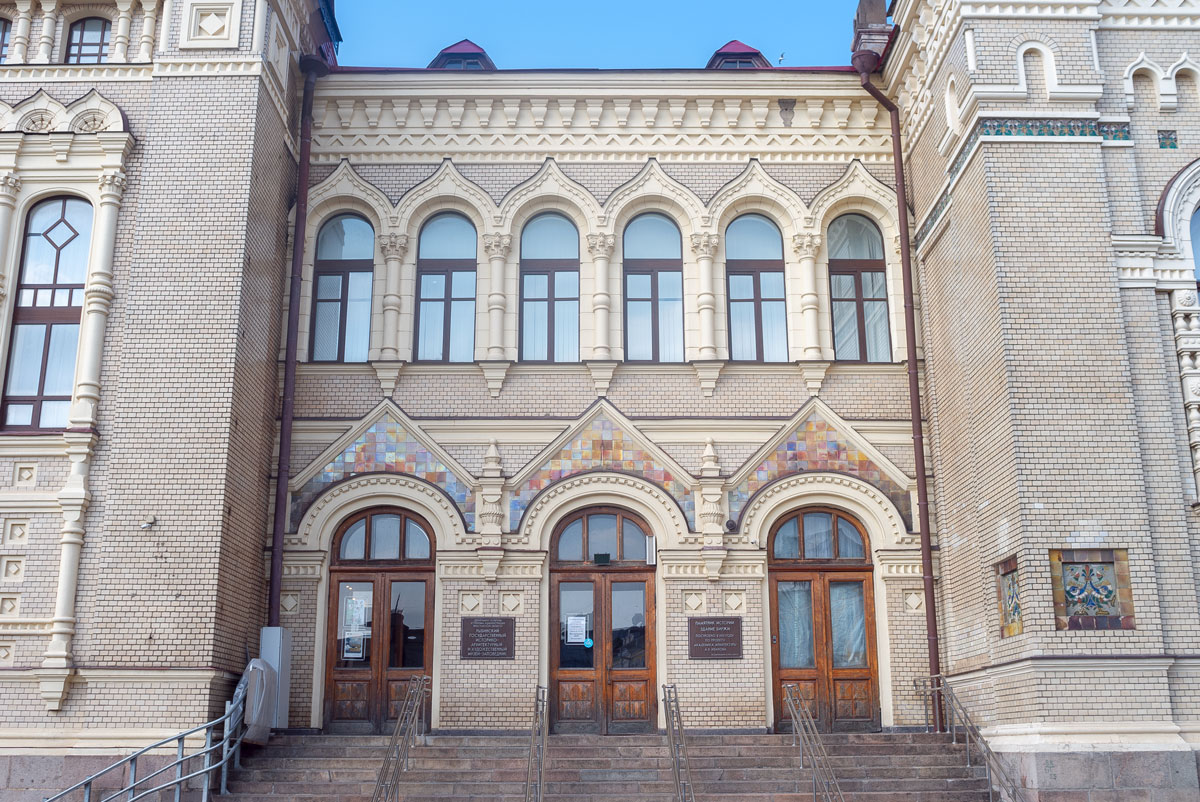
During the Soviet era, all stock exchanges were closed. The building housed a river station and a hospital. Now it is a museum.
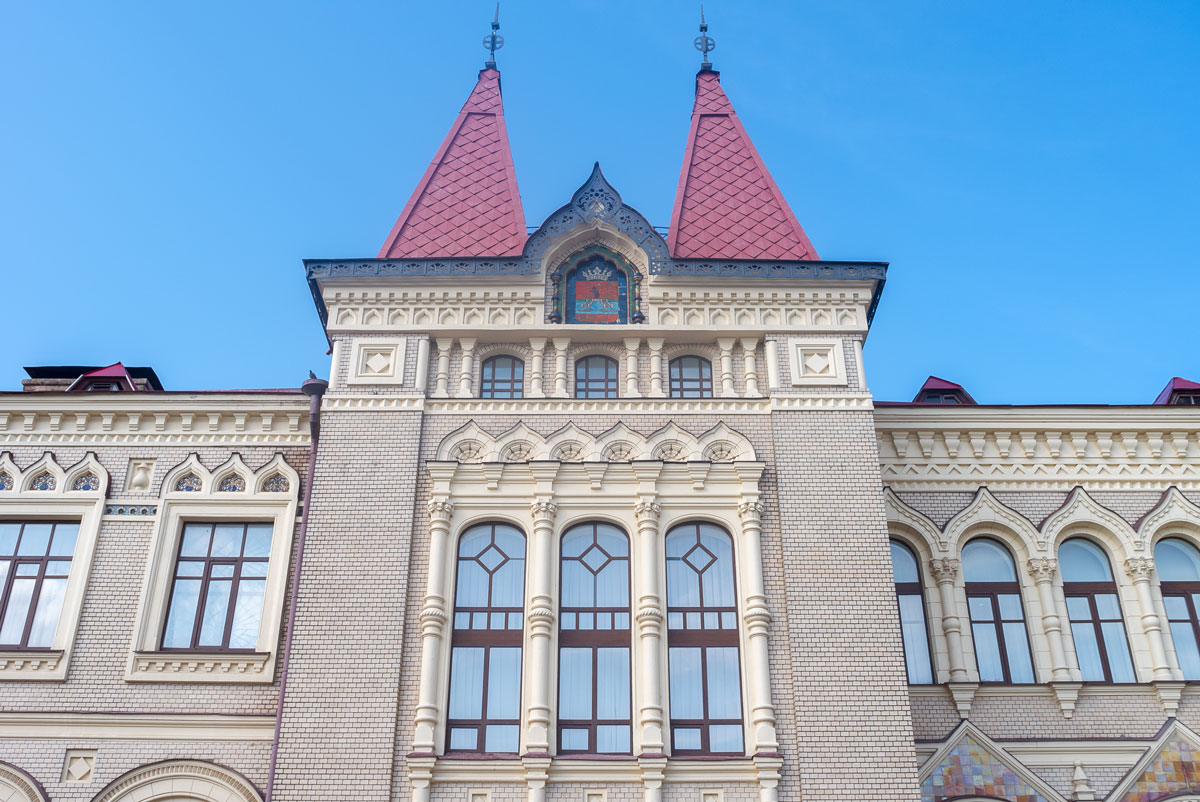
Another fabulous building in Rybinsk is the mill of the merchant Yefrem Kalashnikov. The old brick factory building is in the best traditions of English capitalism. It was built in 1899.
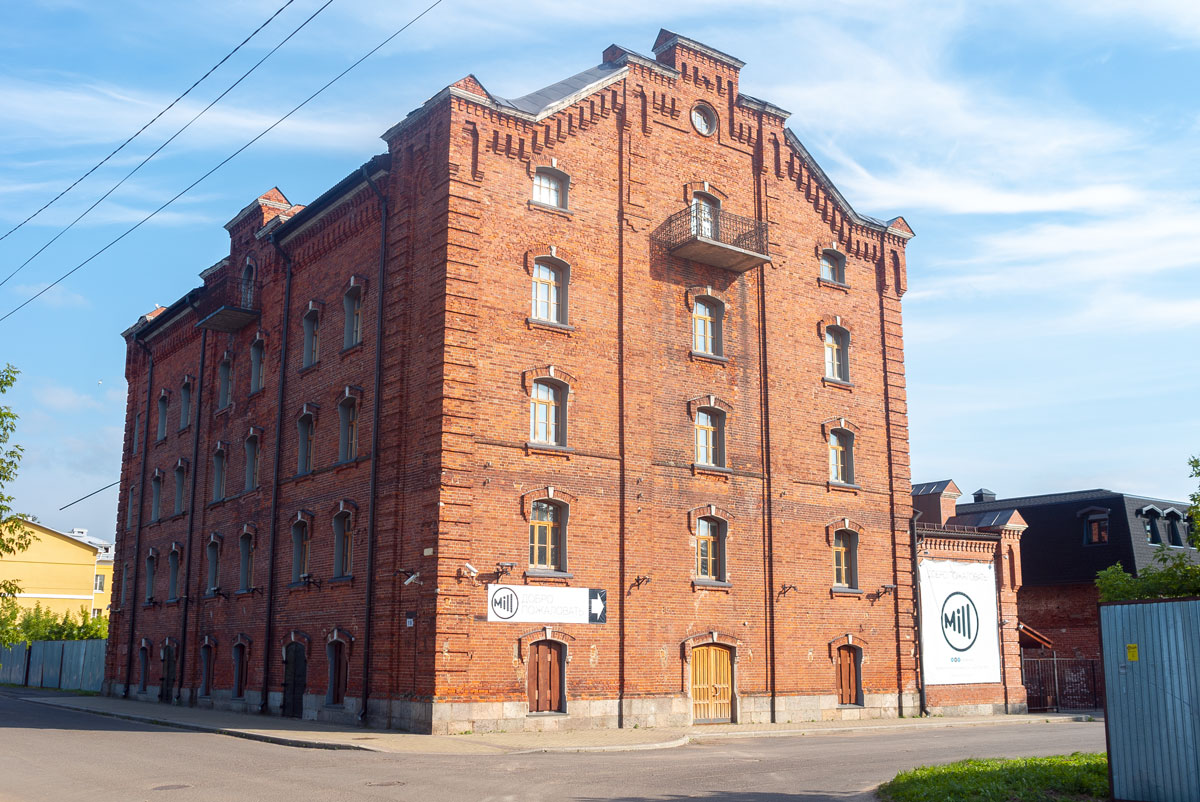
It is said that the merchant Kalashnikov was a successful businessman, and flour from his mill was supplied to Argentina and England, receiving various awards. Now it is a nightclub called “Mill” located in the building.
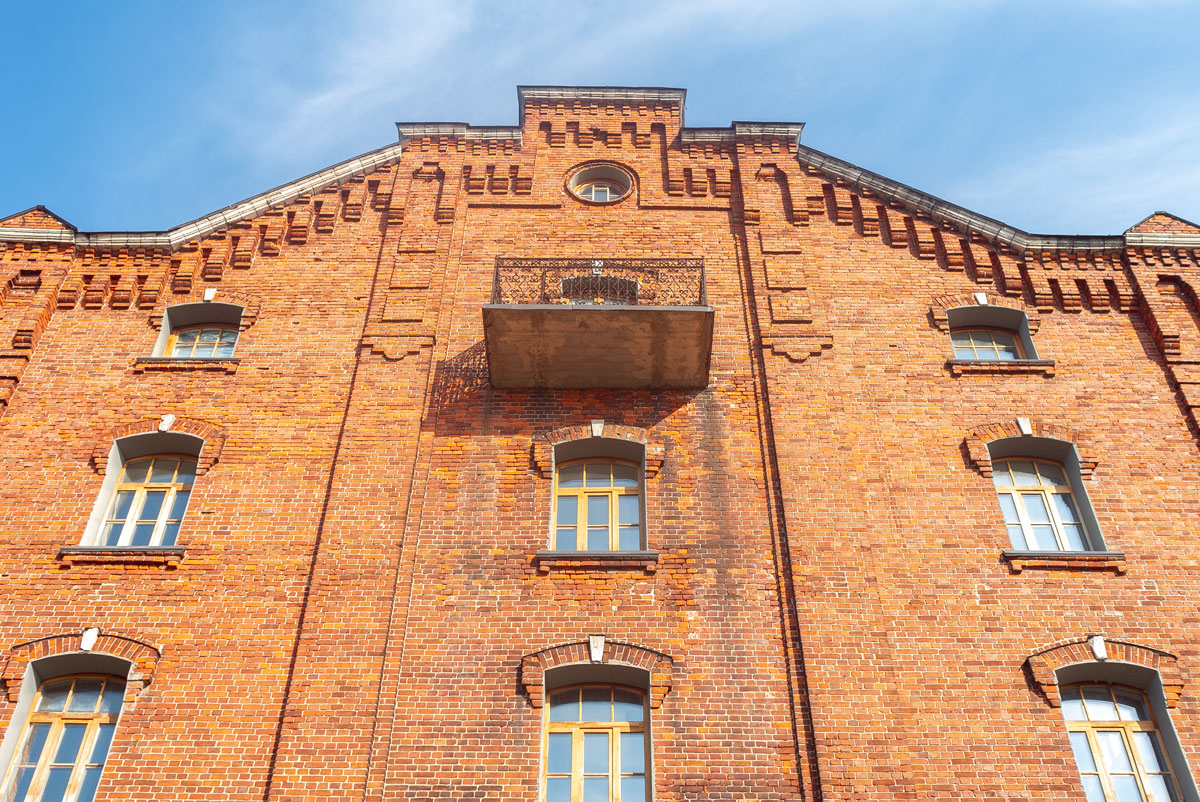
Even the old factory chimney has been preserved behind the nightclub.

Another surprise awaits in the residential neighborhoods of Rybinsk. Amidst the panel apartment buildings suddenly rises a huge Gothic-style church.
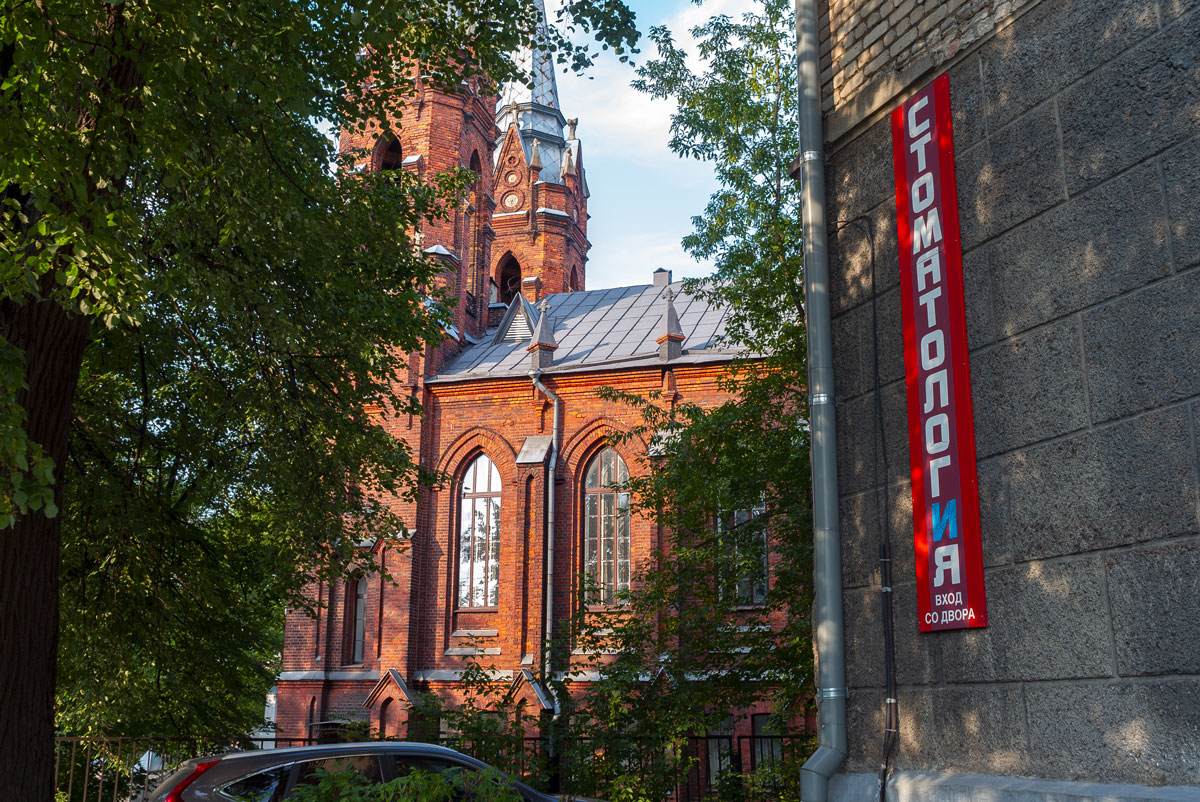
Such a surprise can leave one speechless.
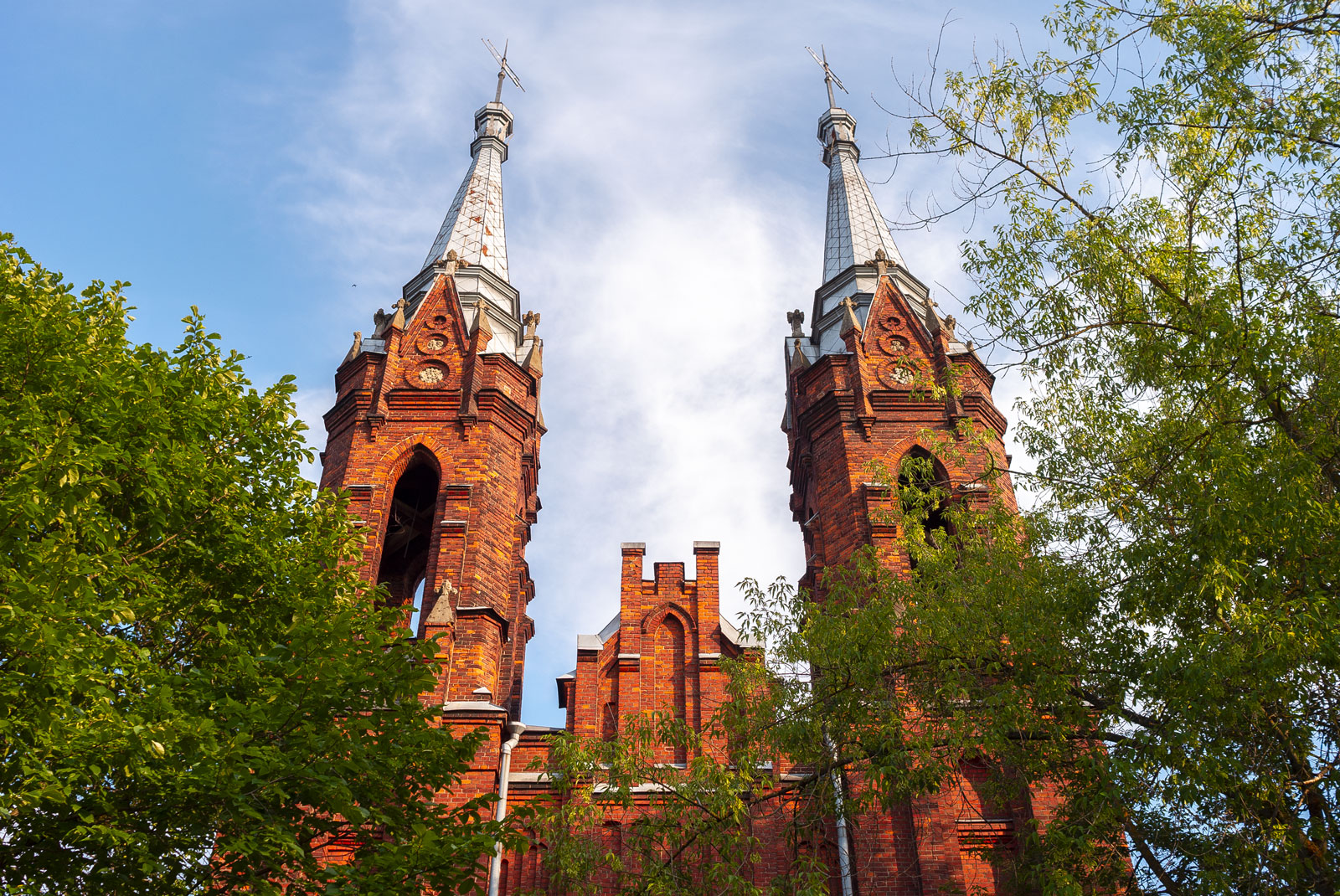
This is a Polish Catholic church. In Rybinsk, after the Polish uprisings, a Catholic community of exiled Poles was formed. Later, Nicholas II lifted the sanctions against the Rybinsk Poles in order to strengthen religious tolerance, and this church was built in the city.
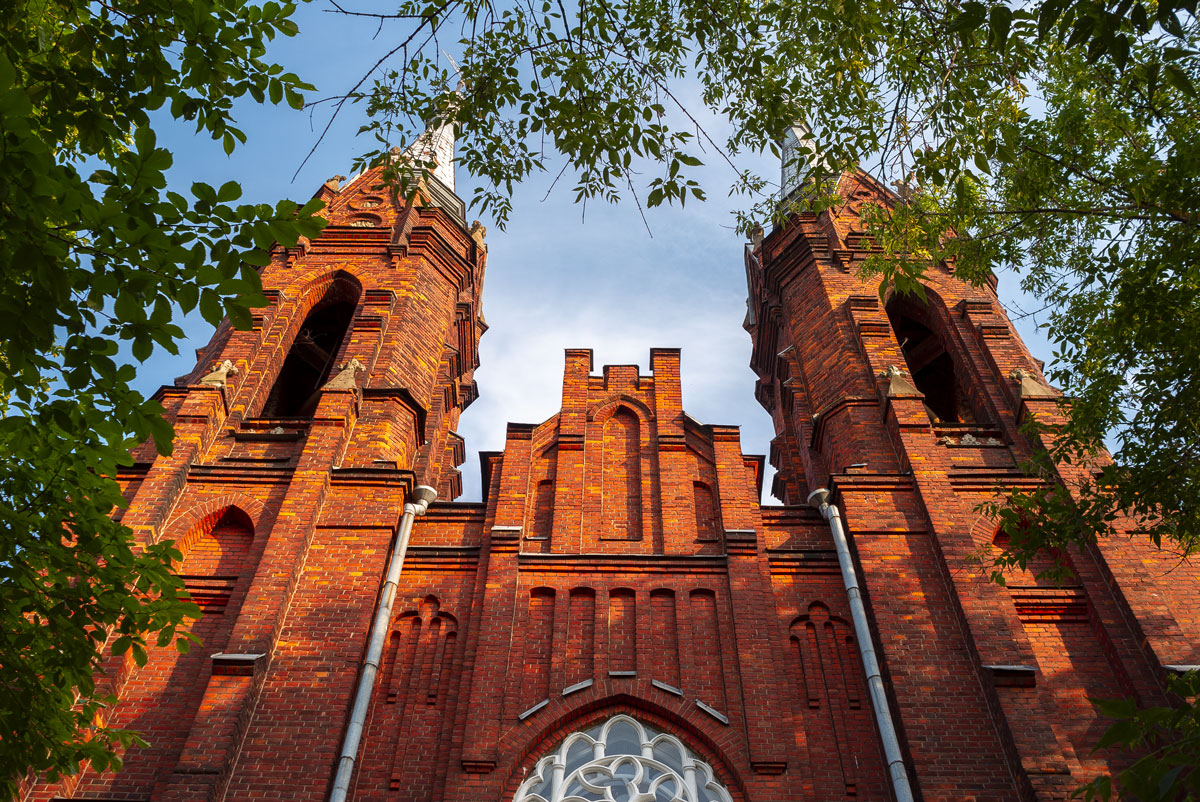
Now there is some kind of student club here. When I was taking pictures of the church, a girl came out of the door and got into a car with Polish license plates.
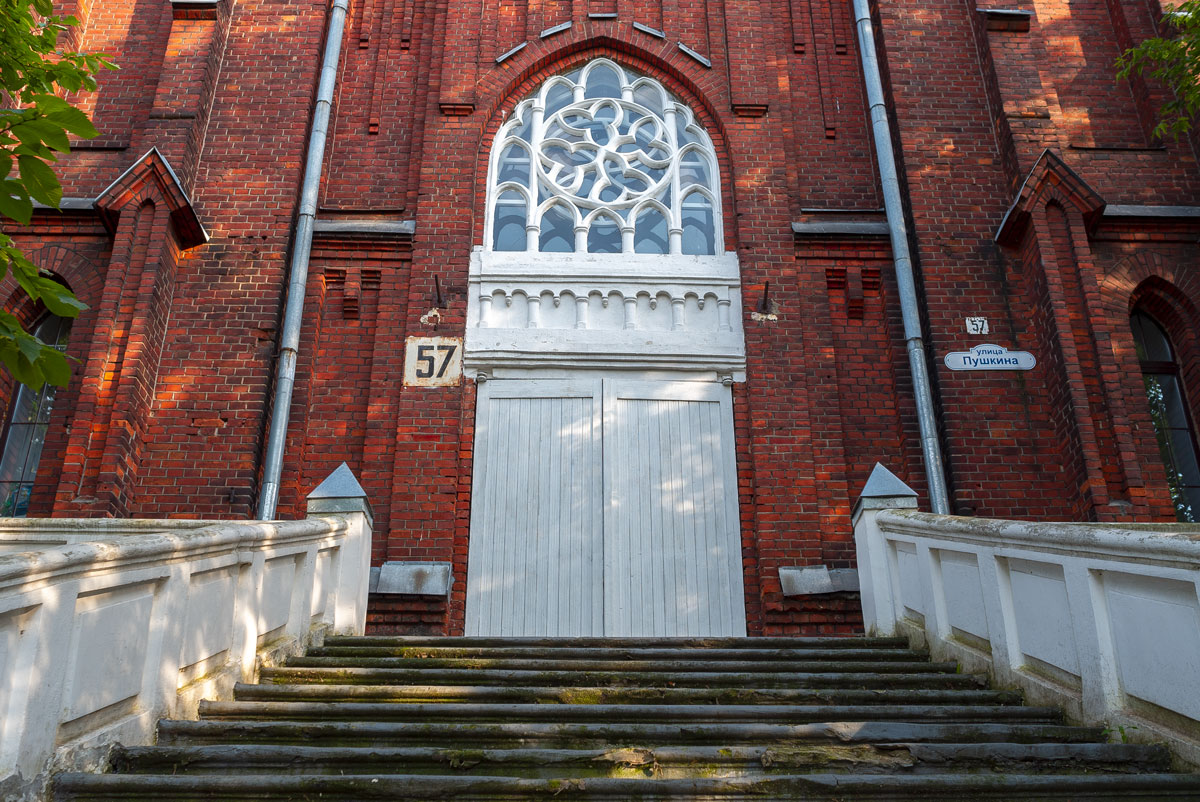
But the wonders don’t end there. In a secluded corner of Rybinsk, there is an old building where Joseph and Nicholas Schenker were born into a Jewish family. They lived here until the age of 15 before their family moved to the United States.
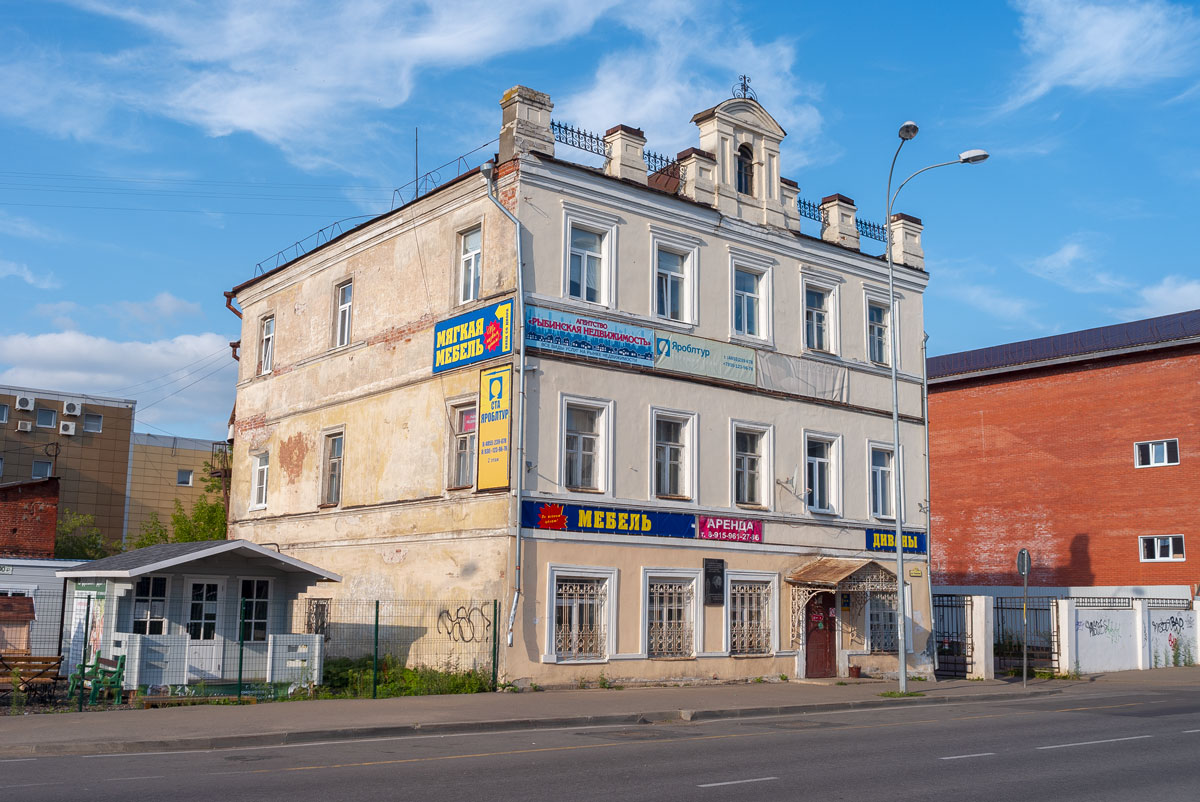
Almost no one has heard these names. It’s not surprising: in Russia, they have never liked to promote fellow countrymen who have achieved great success abroad.
When the brothers ended up in New York and grew up a bit, Joseph changed his name to Joseph Michael Shenk. Nicholas changed his name to Nicholas Shenk.
Later, Joseph founded the company “Twentieth Century Studios”.

And Nicholas became the president of the Metro-Goldwyn-Mayer company.

A modest sign reminds of this: “The founders of Hollywood were born in this house.”
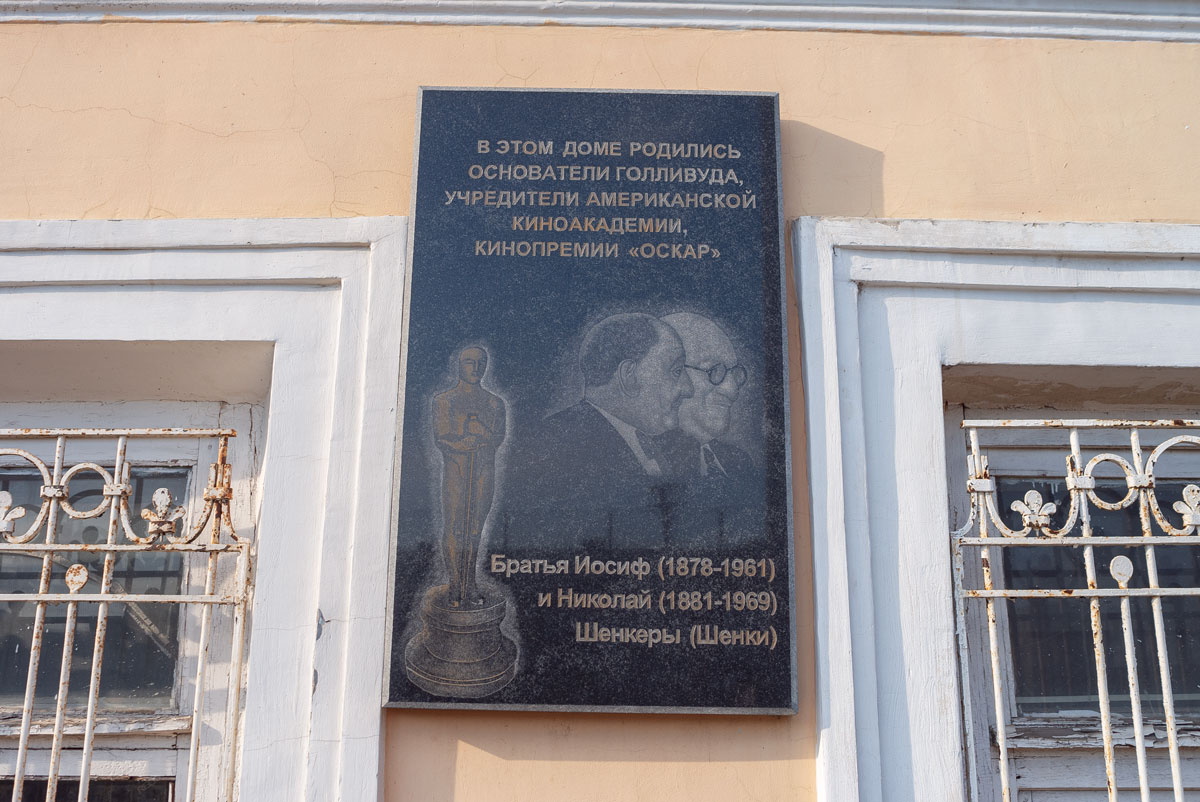
Rybinsk is an amazing city. It’s the only Russian city I wanted to return to and did. A year later, I discovered that the Rybinsk authorities took serious steps towards restoring the city. They fixed broken streets, began the restoration of the Mauritanian House, and cleaned up the facades in the city center.
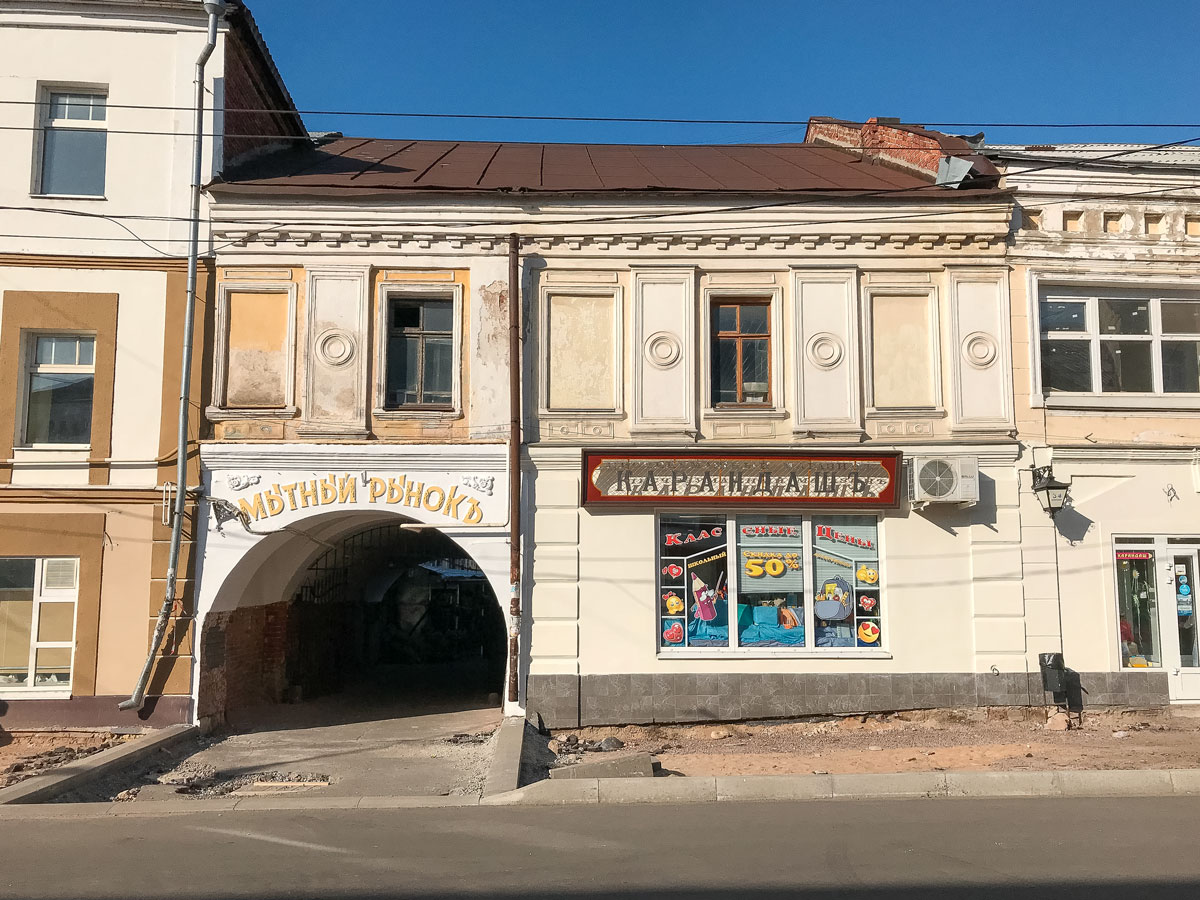
However, the most incredible thing is that in Rybinsk they came up with an idea to make shop owners in the center change all signs to the pre-revolutionary style.

This is some kind of outrageous violation of all norms of competition and market freedom.

But damn, it turned out so cool.

Dear readers! Please come to Rybinsk and don’t forget your guidebook. And I will come too, for the third time, in a year. It’s painfully good here.
